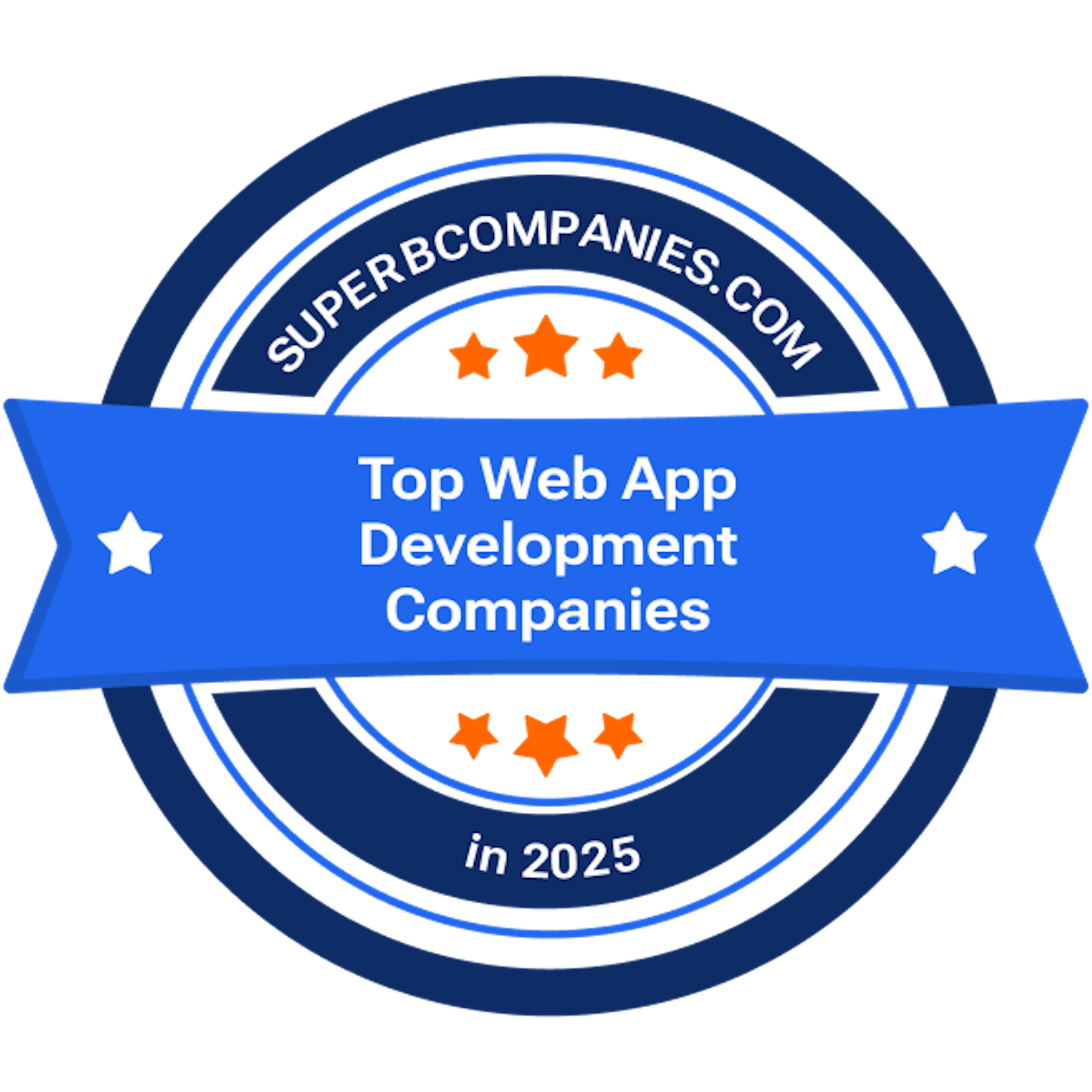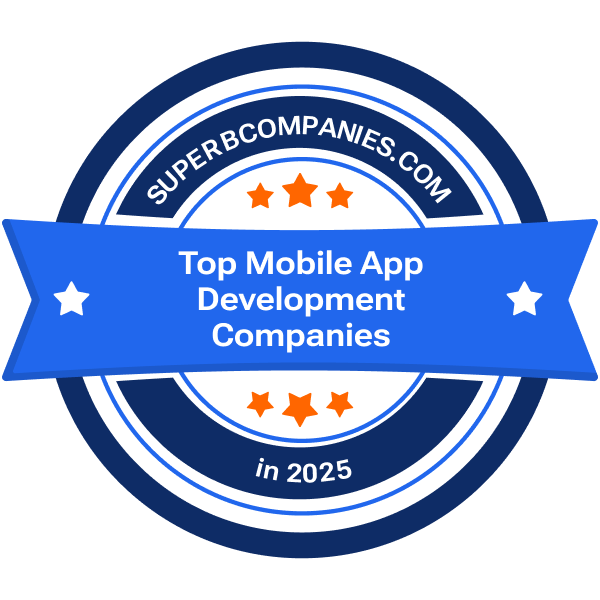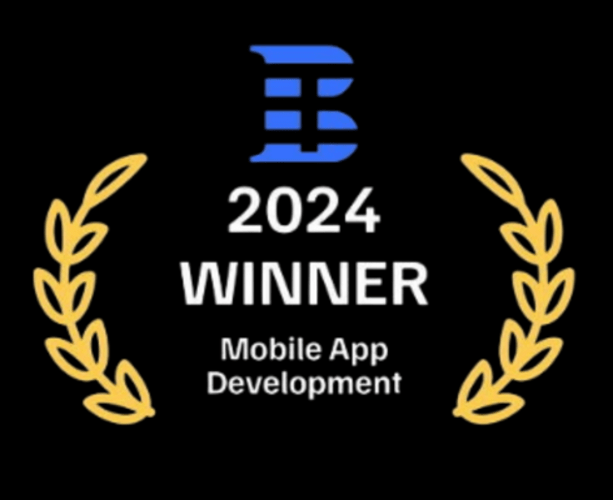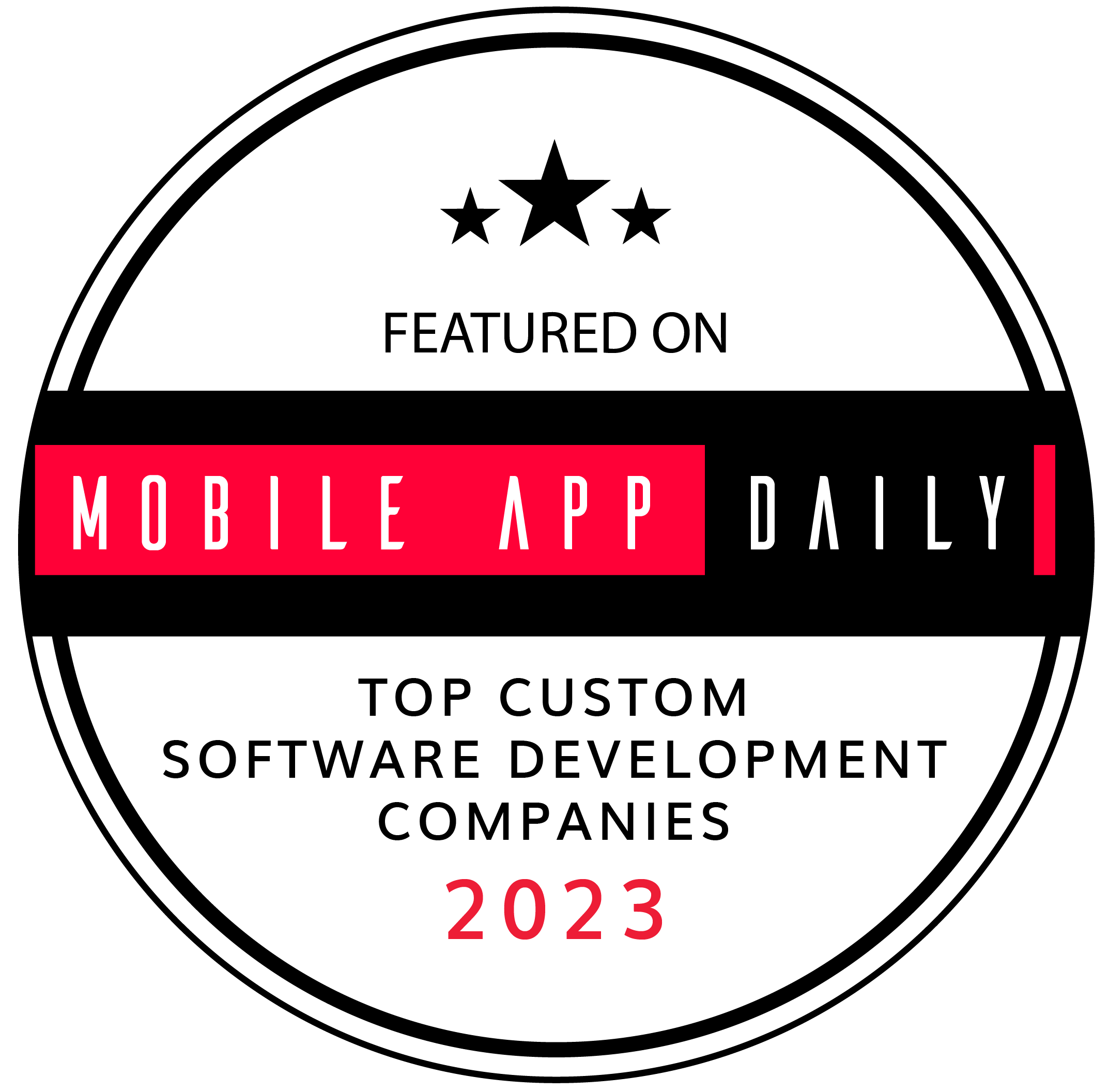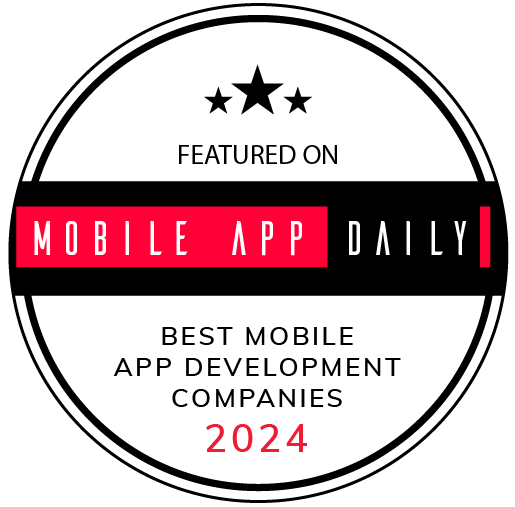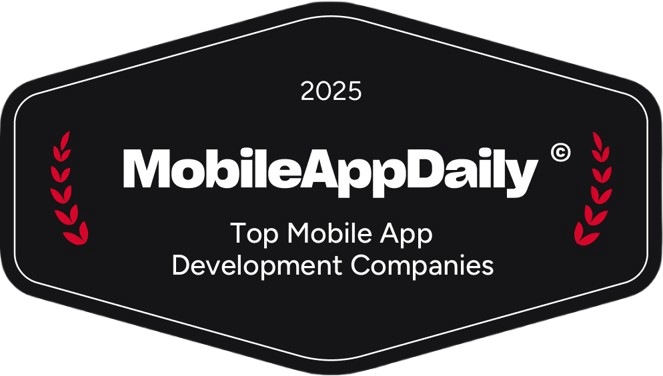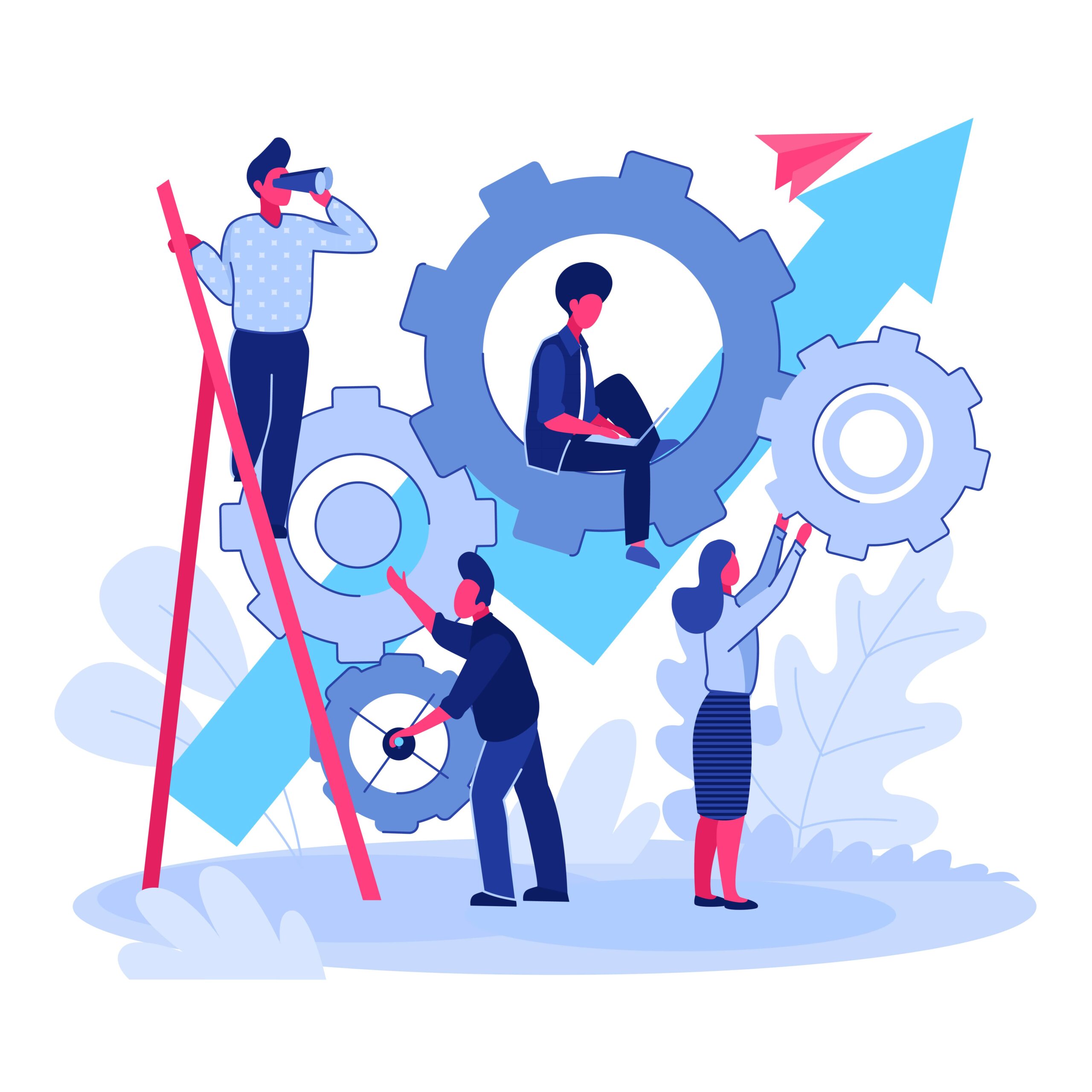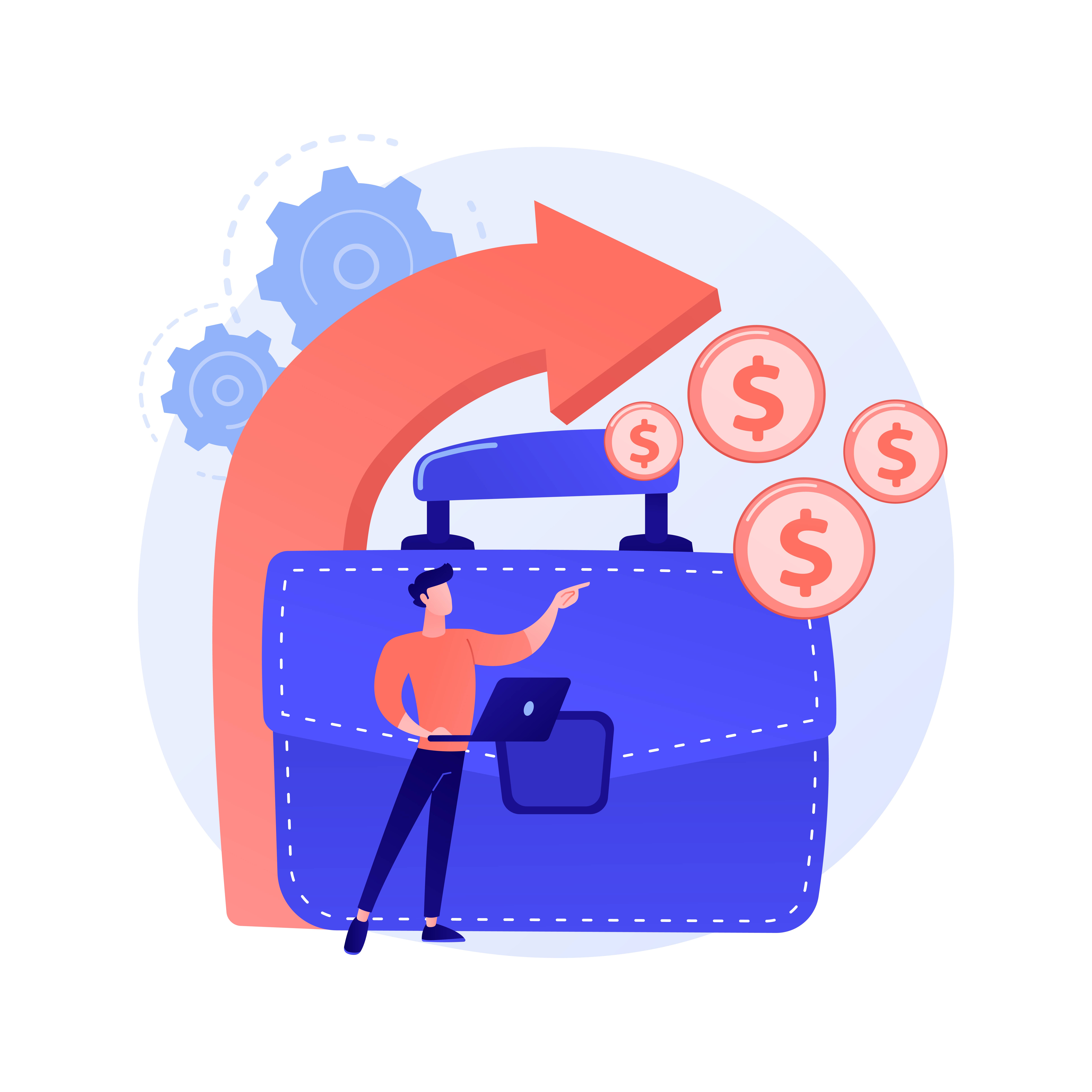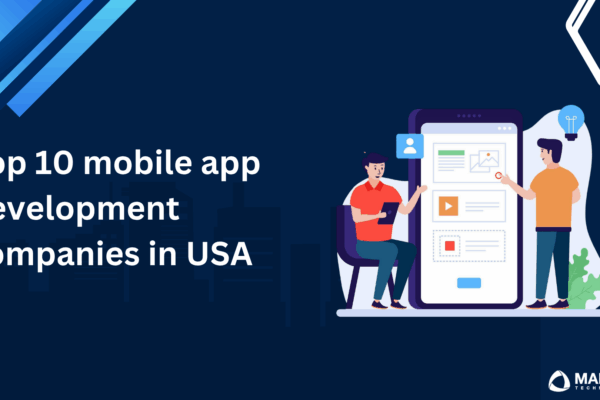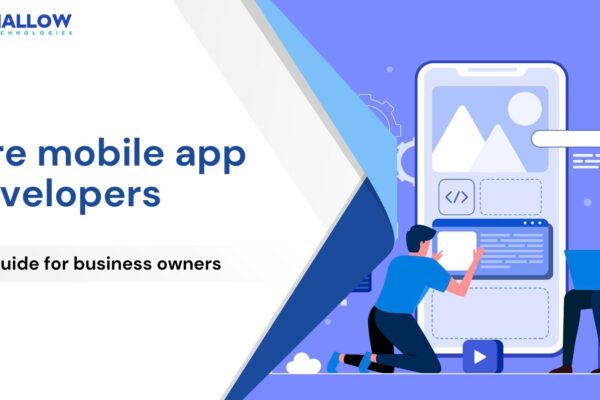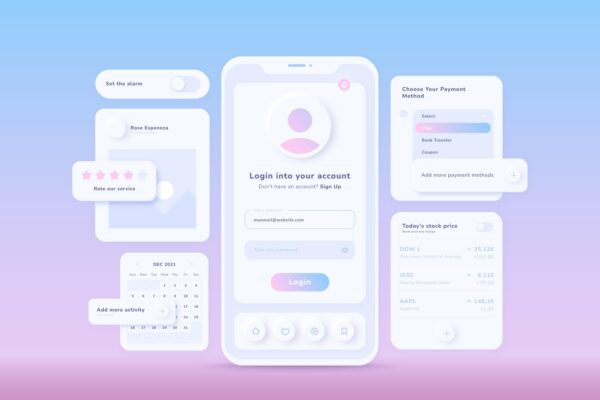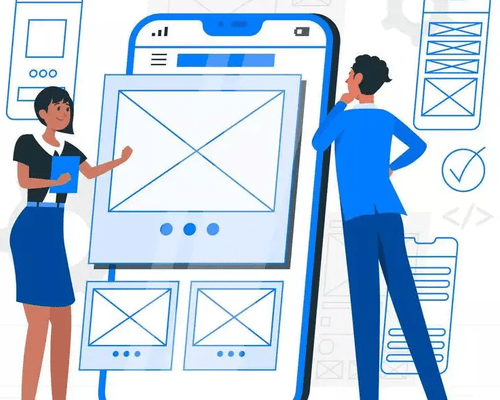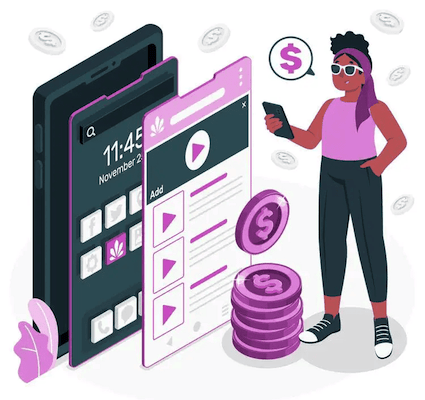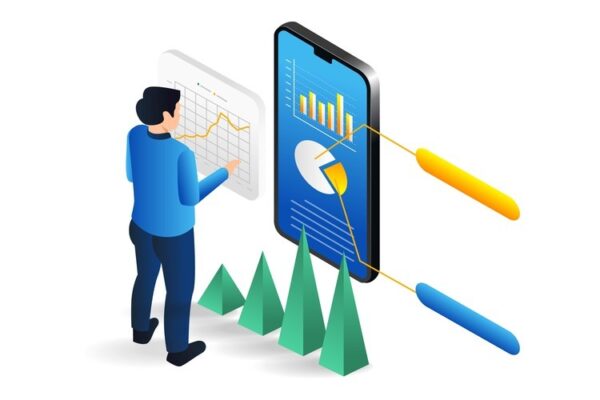Ready to grow your business with a custom mobile app like our successful clients? Let’s collaborate to turn your ideas into reality! Contact us now and start your path to success.
Struggling to build a mobile app that users actually like to engage with?
At Mallow, we’ve consistently turned mobile app ideas into powerful, functional solutions that elevate user experience and support business growth. With our proven track record in delivering mobile application development services, we’ve built innovative and scalable apps tailored to the unique needs of various industries and we continue to do so with every project we take on.
- 15x business growth enabled for businesses
- Delivered applications meeting all compliance standards
- 70% of daily work automated for enterprise clients
- 4M+ daily events managed by apps built from scratch
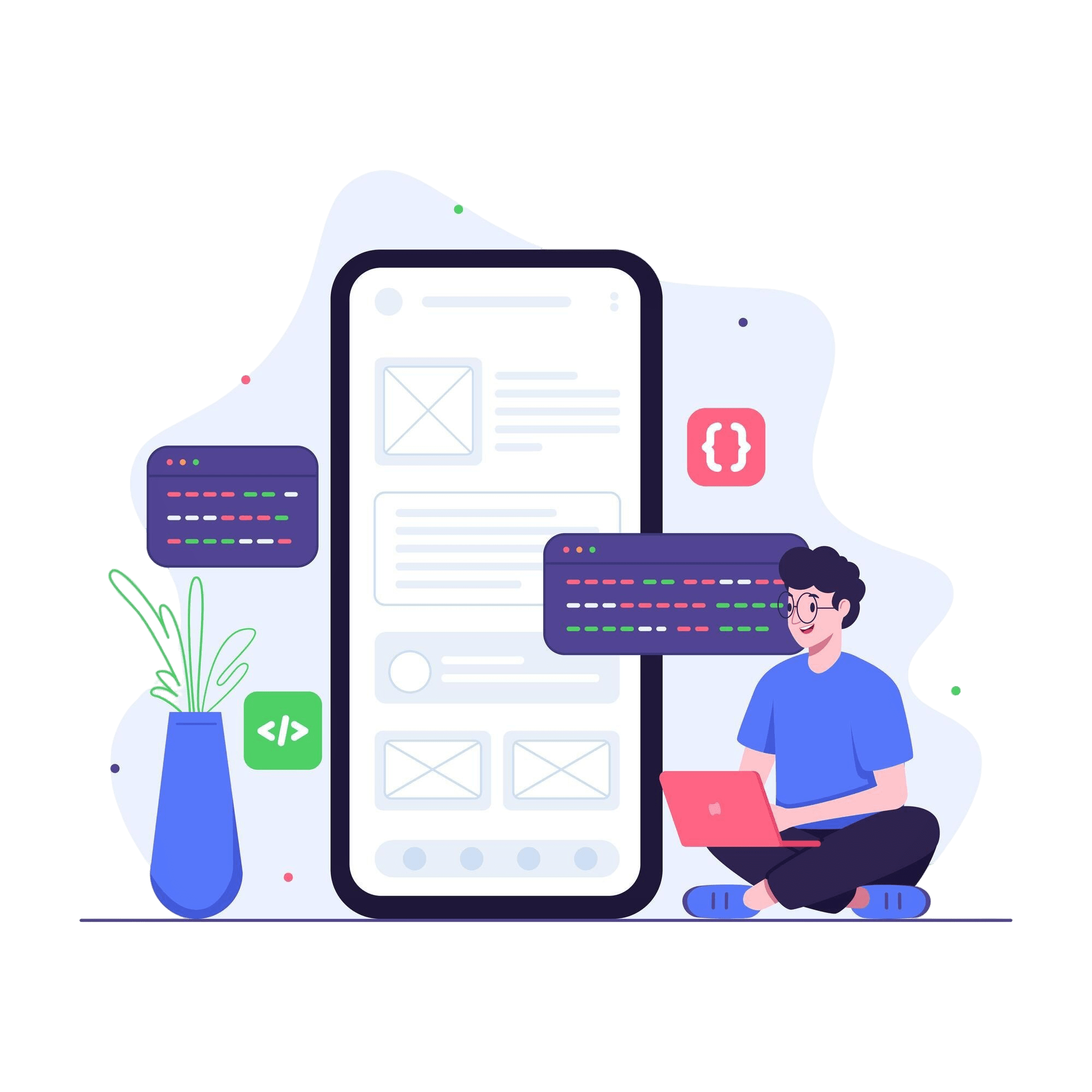
How a mobile application development company helps your business stay ahead
Opting for mobile application development services can transform your business by opening up exciting opportunities for customer engagement and revenue enhancement. With the right mobile solution, you can elevate your brand and forge deeper connections with your audience. Here’s why investing in these services is essential for your business success:
Increased brand visibility
An app on users’ devices keeps your brand front and center, leading to greater brand awareness and recognition over time.
Wider audience reach
A mobile app allows businesses to reach a global audience, breaking geographical barriers and tapping into new markets.
Enhanced user experience
Mobile apps deliver faster, smoother, and more interactive experiences, boosting customer satisfaction and retention.
Enhanced customer engagement
Mobile apps create direct channels for communication, allowing businesses to engage customers through notifications, messages, and personalized offers.
Robust device feature integration
Mobile apps enhance user engagement and security by leveraging functionalities like GPS, camera, and biometric authentication for personalized experiences and secure logins.
Data collection and analytics
Mobile apps allow businesses to gather valuable user data, which can be analyzed to refine marketing, improve products, and enhance user experience
What mobile application development services do we offer?
Mallow offers comprehensive mobile app development services, including Android, iOS, and Flutter development, tailored to your business needs. As a trusted app development company with skilled mobile app developers, we ensure every step from idea conceptualization to post-launch support is driven by innovation and quality.
Mobile app UI/UX design
Our mobile application company prioritizes user-centric UI/UX design, creating intuitive and visually engaging interfaces that enhance the user experience and align with the latest market trends. We ensure your app stands out with seamless navigation, smooth responsiveness, innovative features, and modern aesthetic appeal across all devices.
Mobile app consulting
We help you finalize your app concept and provide expert advice on platform and device compatibility. Our team plans project activities to ensure a smooth development process while focusing on optimizing costs for efficiency. We are committed to delivering a tailored solution that meets your specific business needs and objectives.
Android development services
As a mobile application development agency, we provide customized Android app development solutions with rigorous testing for reliability, security, and performance. As skilled and experienced mobile apps developers, we build robust native apps that offer seamless performance and deliver exceptional user experiences.
iOS development services
Our iOS development services create high-quality, innovative, and reliable applications for Apple devices, emphasizing intuitive design and seamless navigation. We develop native iOS apps that deliver exceptional performance and access to the latest cutting-edge features.
Flutter development services
As an app developing company, we specialize in creating versatile applications that perform seamlessly across platforms. Our agile methodology enables quick iterations to adapt to your evolving needs, ensuring smooth functionality on both iOS and Android devices.
Progressive web apps (PWAs)
At Mallow, we offer innovative PWA solutions that blend web and mobile experiences. Our PWAs ensure fast, reliable access, enabling users to engage with your app anytime, anywhere, with offline capabilities and push notifications.
Mobile app modernization
As a mobile app creation company, we modernize your app for enhanced functionality and user experience through custom mobile software development. Our team uses the latest technologies for optimal performance, prioritizing feedback to keep your app competitive and evolving with market demands.
Mobile app integration
With our expertise in APIs, we ensure smooth integration of your app with backend systems and third-party software, which is a key aspect of mobile company app development. This enhances functionality, enables real-time data exchange, and creates a cohesive ecosystem to support your app's performance and scalability.
Maintenance and support
We offer comprehensive and reliable post-launch support to ensure your app stays compliant, secure, and performs optimally. Our team addresses issues promptly and manages performance metrics, allowing you to focus on growth. We also incorporate valuable and actionable user feedback to keep your app updated and relevant.
Top components to focus on for successful mobile application development
Creating a successful mobile application requires a blend of essential components, such as UI/UX design, database management, cross-platform compatibility, and more, that drive functionality and user engagement. Focusing on these core elements ensures that your app stands out in today’s competitive market. Here are the essential components of mobile application development services:
| Components | About the component | How it will benefit your business app? |
|---|---|---|
| User Interface (UI) & User Experience (UX) | Ensures intuitive, visually appealing, and easy-to-navigate interactions for users in application development for mobile. It focuses on components like buttons, menus, fonts, icons, and layouts to keep users engaged. |
|
| Database management | Systems like MySQL, MongoDB, or Firebase handle app data such as user profiles and transactions, ensuring efficient data storage, retrieval, updates, and management. |
|
| API (Application Programming Interface) | Enables communication between the app and external services, facilitating real-time data, social logins, or payments. They also connect the frontend and backend for seamless data exchange. |
|
| Cross-platform Compatibility | Allows apps to function seamlessly on iOS, Android, and other mobile operating systems using frameworks like React Native or Flutter. This maximizes reach and reduces development time and costs. |
|
| Mobile app analytics | Utilizes tools like Google Analytics or Firebase to monitor user behavior, app crashes, and performance. It provides insights into engagement and retention, helping optimize functionality and enhance user experience. |
|
| Personalisation | In application development for mobile, user preferences, behaviors, and demographics are incorporated to tailor the app experience for each individual. Aims to enhance engagement and satisfaction by delivering relevant content, recommendations, and features that resonate with users. |
|
| Offline Functionality | Enables the app to perform essential tasks and access content without an internet connection. This feature ensures users can continue to engage with the app seamlessly, enhancing usability and reliability in various environments. |
|
| Security framework | Comprises encryption, authentication protocols, secure data transmission, and firewalls to protect user data from breaches and unauthorized access. It safeguards against various vulnerabilities. |
|
| Push notifications | Deliver updates, reminders, or marketing messages directly to users, driving engagement and retention. Effective use enhances user retention, while overuse risks uninstalls. |
|
Why our clients keep choosing us? Listen from them...
Discover why our clients have consistently chosen us for their software development needs. With over 13 years of experience, our dedicated team delivers exceptional solutions, empowering your business to thrive. With our flexible scaling and unwavering commitment to client satisfaction, we’re your go-to partner for innovative software development.

"Mallow Technologies Private Limited has an excellent company culture and is extremely responsive and reliable."
Joseph Motley, CEO, Trygg

"Their reliability, attention to detail, transparency, and technical communication has been excellent."
Brian Casel, Founder & CEO, SaaS Product Company

"They have become a true business partner that I can rely on to perform without worry and deliver without hesitation."
Chris Jones, CTO, School Shares

"The work is high-quality, but I especially appreciated Mallow Technologies' autonomy."
Chris Atkinson, CEO, Fleetrover

"They offer great communication matched with technical skills and reliability."
Brian Casel, Owner, Instrumental Products

"They deliver their items on time."
Oky Sabeni, Product Manager, Podseeker

"They've become a valuable strategic partner."
Aaron Kassover, Founder, AgentMethods

"The product delivered is up to our expectations."
Dinesh Kumar, Manager, The Karur Vysya Bank Limited

"They're doing a great job. I'm still working with them."
Alex Dracup, Founder, Reef App Development
A step-by-step look at our mobile application development process
Tailored to your vision and goals, our mobile application development process combines best practices with innovative strategies to deliver exceptional results. Here are the six essential steps that will guide you from concept to launch:
1. Gathering requirements
Our mobile application development process starts with gathering detailed insights on your objectives, target audience, desired app features, functionality, design preferences, and technical specifications.
2. Planning & design
We create wireframes and design mockups as a key part of our app development services, aligning with your requirements to define the app’s structure, UI, and UX, while planning for scalability with the right technical approach.
3. Development
As a mobile application development agency, our expert team implements the app's functionality, coding the frontend and backend components. We ensure seamless integration, optimal performance, and compatibility across various mobile platforms.
4. Testing & quality assurance
We conduct thorough testing to ensure your app works flawlessly. We check functionality, performance, usability, and security. Any bugs or issues are promptly addressed to guarantee a great user experience.
5. Deployment & launch
We prepare your app for release, including app store submission, backend infrastructure setup, and coordinate with you for a successful launch to generate excitement and engage your target audience.
6. Post-launch support
We continue to support you after the launch. We monitor your app's performance, gather user feedback, and provide ongoing assistance. We keep your app up-to-date with new features and bug fixes for user satisfaction.
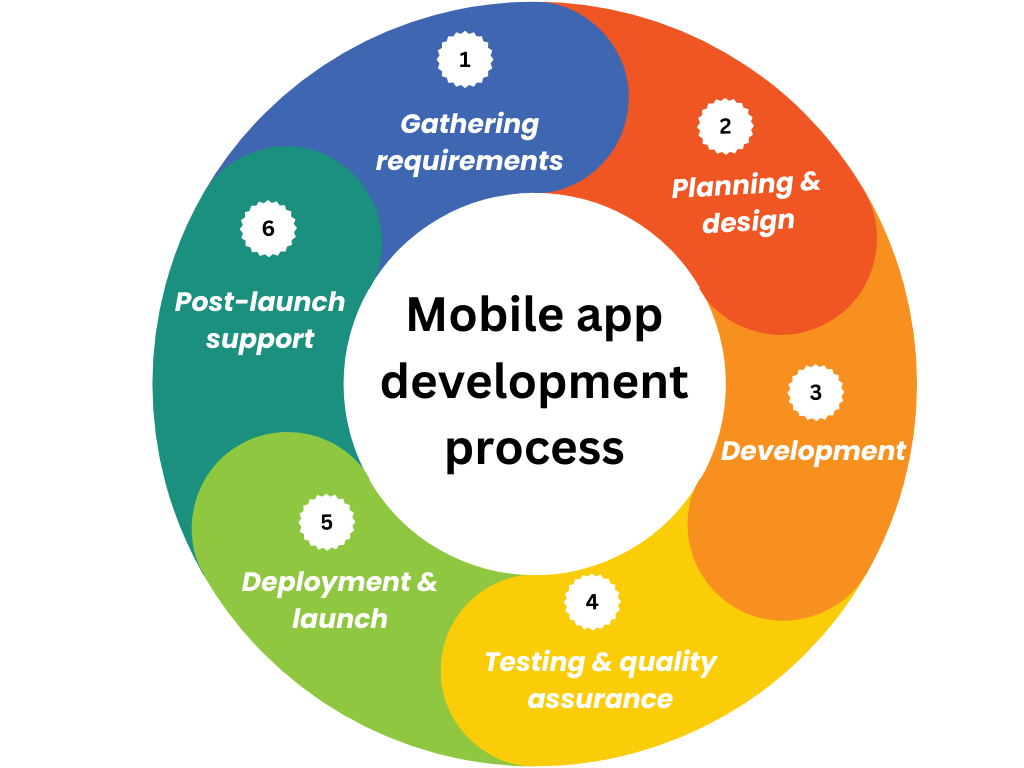
What key factors should you consider when outsourcing
mobile application development services?
By outsourcing mobile application development, you can access a global talent pool for building your application. When you partner with a reputable outsourcing firm, you share the responsibility for project’s success, reducing the burden on your internal team and allowing them to focus on your core business priorities.
It’s important to choose the right application development team, as the wrong choice can cost you both time and money. Here are the key factors to consider when outsourcing your mobile application development:
Post-launch support
Access to expertise
Quality assurance
Client reviews and testimonials
Communication channels
Portfolio and experience
Technical proficiency
Cost and budget
Development methodology
Scalability options
What are the benefits of outsourcing mobile app development services?
- Access to global talent
- Focus on core business goals
- Rapid project execution
- Flexibility & scalability
- Cost efficiency
Outsourcing provides access to a global pool of skilled developers, ensuring you work with experts in mobile app development services who bring in-depth experience and innovation to your project. This approach allows you to leverage specialized knowledge and cutting-edge techniques, resulting in a higher quality application that meets your business needs.
By outsourcing, your team can concentrate on core business operations while the development partner manages the technical aspects through specialized mobile app development services. This strategic approach boosts productivity, allowing your internal team to focus on core activities, while experts ensure efficient app development. Ultimately, this leads to smooth project execution and a successful launch.
Outsourcing mobile app development services facilitates rapid project execution by providing a dedicated team of experts. This streamlined approach accelerates development, allowing for quicker iterations and a faster time to market. By prioritizing efficiency, outsourcing ensures timely delivery without compromising quality.
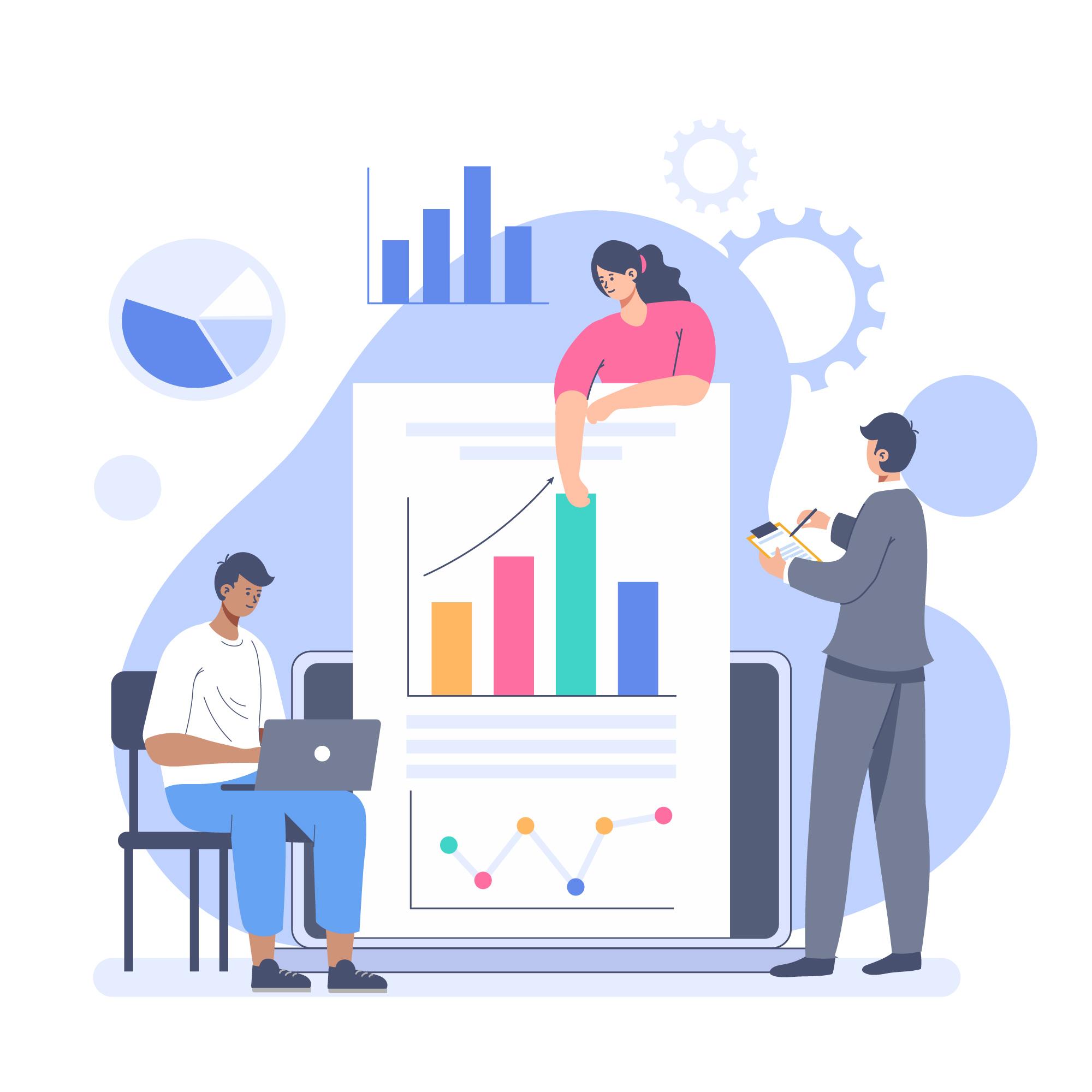
Outsourcing offers flexible engagement models, allowing you to scale your team according to project demands. This adaptability means you can easily adjust resources as the project evolves, bringing in additional expertise or reducing the team size as necessary, all without the burden of long-term commitments.
Outsourcing enables businesses to save on hiring, training, and infrastructure costs associated with building an in-house team. With significantly lower development rates in certain regions, you can access top-tier talent while optimizing your budget. This approach ensures high-quality standards while allowing you to allocate resources effectively to other critical areas of your business.
Why choose Mallow for your Mobile app development services?
At Mallow, we have always been committed to offering comprehensive mobile app development services. We focus on crafting custom solutions that meet your unique business needs, ensuring your app is both high-performing and scalable. With our experience, we’ve helped businesses stay ahead in an increasingly competitive market.
As a best mobile application development software company, we emphasize a clear, transparent process. From the initial concept to the final launch, we make sure you understand each stage of development. Our approach is centered around delivering measurable results, allowing businesses to grow and adapt to ever-changing market demands. We’re dedicated to providing continuous support to ensure your app remains optimized and effective in meeting both user needs and business objectives.
Innovative, user-centric design
We craft intuitive, engaging, and visually appealing app experiences tailored to user needs. Our design approach ensures smooth navigation, high user retention, and a strong brand presence.
Agile & accelerated delivery
Our customized agile workflows streamline development, reducing time-to-market while maintaining flexibility. This ensures quick iterations, efficient updates, and adaptability to evolving project requirements.
High-performance app development
Leveraging cutting-edge technologies, we build scalable, secure, and high-performing apps. Our experts ensure smooth functionality, fast load times, and optimal resource utilization.
Flexible engagement models
Whether you need a full team, a fixed-cost project, or support on demand, we offer engagement models that fit your needs and budget.
Security & compliance first approach
We ensure your app meets industry standards and regulatory requirements, delivering a secure, compliant solution that aligns with your business goals, timeline, and budget.
Comprehensive lifecycle management
From initial planning to post-launch support, our mobile application company provides end-to-end app lifecycle management. Our proactive maintenance, updates, and performance optimizations keep your app competitive and future-ready.
What are the best outsourcing solutions we offer that are adaptable to your business needs?
As a mobile app development firm, we offer flexible outsourcing models based on your needs. Whether you need a dedicated team for full-scale development, staff augmentation to fill skill gaps, or a project-based approach for specific tasks, we provide the right expertise.
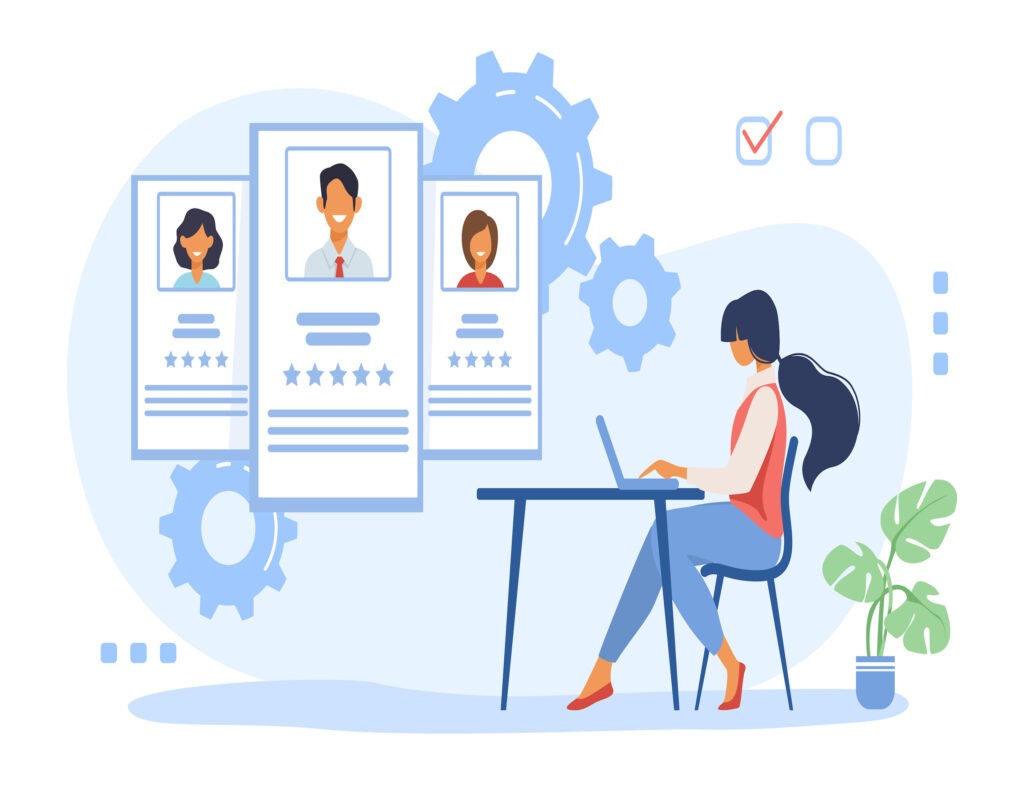
Project-based outsourcing
Opt for project-based outsourcing when you need a specialized team for mobile application development to deliver a defined project on time and within budget. Mallow manages the entire lifecycle from planning and development to testing and deployment, providing a fully managed solution with clear timelines, ideal for projects with well-defined requirements.
Choose from the wide range of pricing models
Fixed price model
- The total cost is agreed upfront based on a well-defined, stable project scope.
- Ideal for small to mid-sized projects with clear requirements, timelines, and deliverables.
Time and Material (T&M) model
- Clients are billed based on actual time spent and resource rates.
- Suitable for projects with evolving requirements, like agile development or undefined scopes.
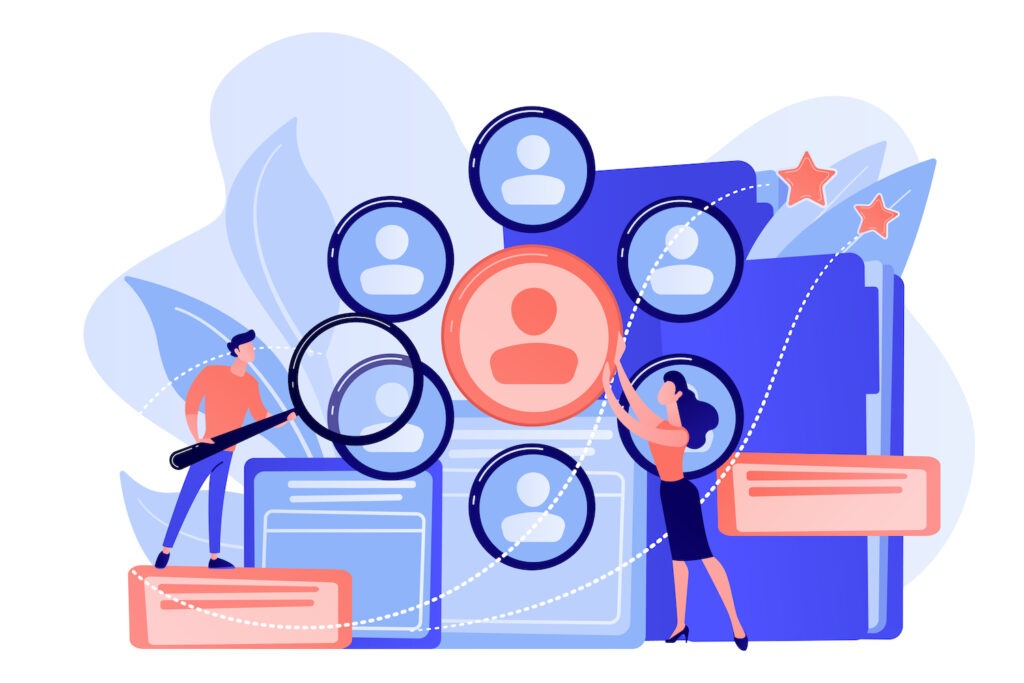
IT Staff augmentation
Our IT Staff Augmentation model provides flexible expertise to fill skill gaps and manage workloads. Our specialists integrate seamlessly with your team, offering developers, designers, testers, and more to help you achieve your project goals.
Choose from the wide range of pricing models
Monthly retainer model
- Fixed monthly fee per staff member for full-time engagement, ensuring predictable billing.
- For projects requiring ongoing support, maintenance, or long-term resources with consistent workloads.
Time and Material (T&M) model
- Billed based on the hours worked by the augmented staff. Rates are usually agreed upon per hour or per day.
- For projects with undefined or evolving requirements, or for roles that require flexibility in workload and duration.

Dedicated Development Team (DDT)
For clients with long-term or complex projects, our Dedicated Development Team model provides a fully committed team that works as an extension of your organization. This model is ideal for ongoing development, maintenance, and scaling. Mallow assembles a team of dedicated developers, designers, and project managers who work exclusively on your project.
This team aligns closely with your goals and processes, offering continuity, consistent progress, and complete alignment with your business objectives. Pricing is typically based on a fixed monthly fee per team member or a set hourly rate, covering the developer’s time, expertise, and resources. This model allows clients to have predictable costs while gaining flexibility to scale the team as project needs evolve.
Our featured mobile app projects
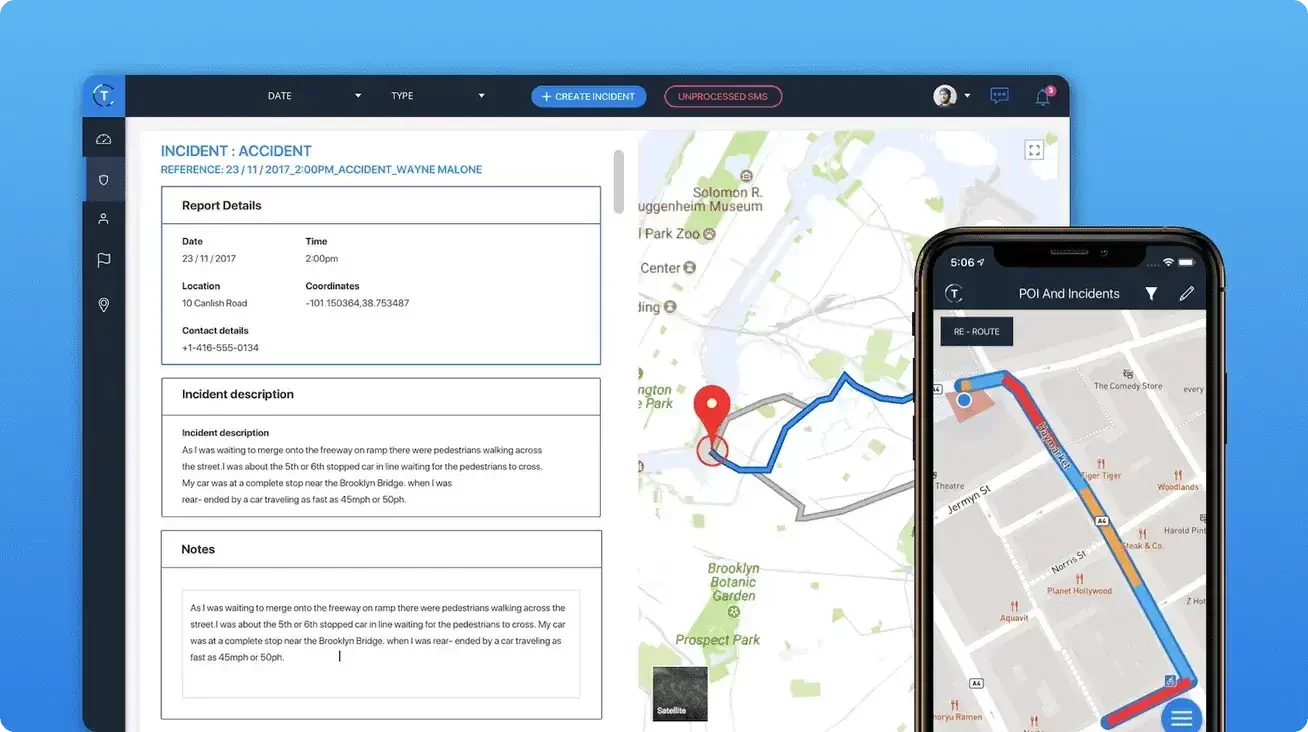
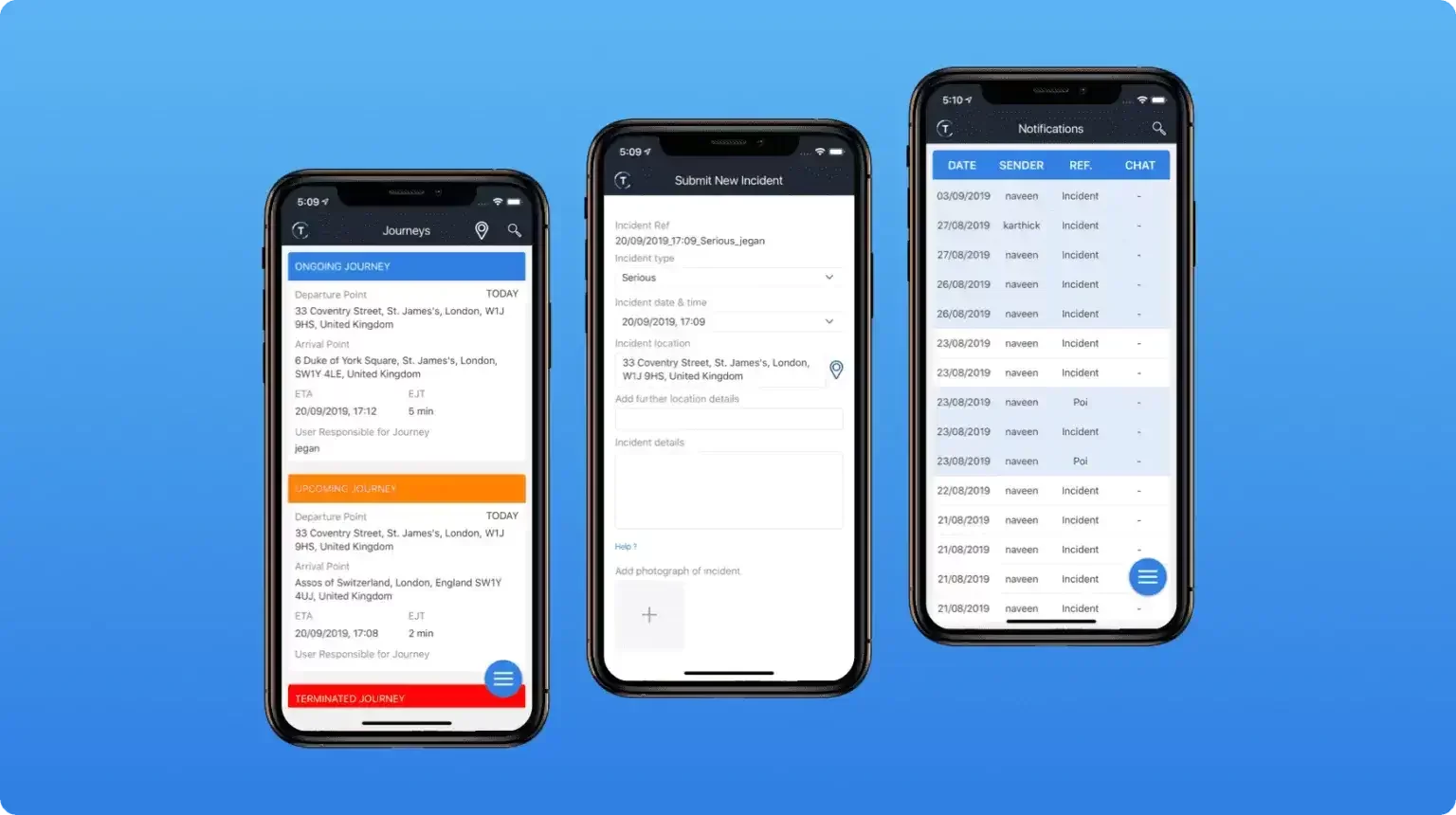
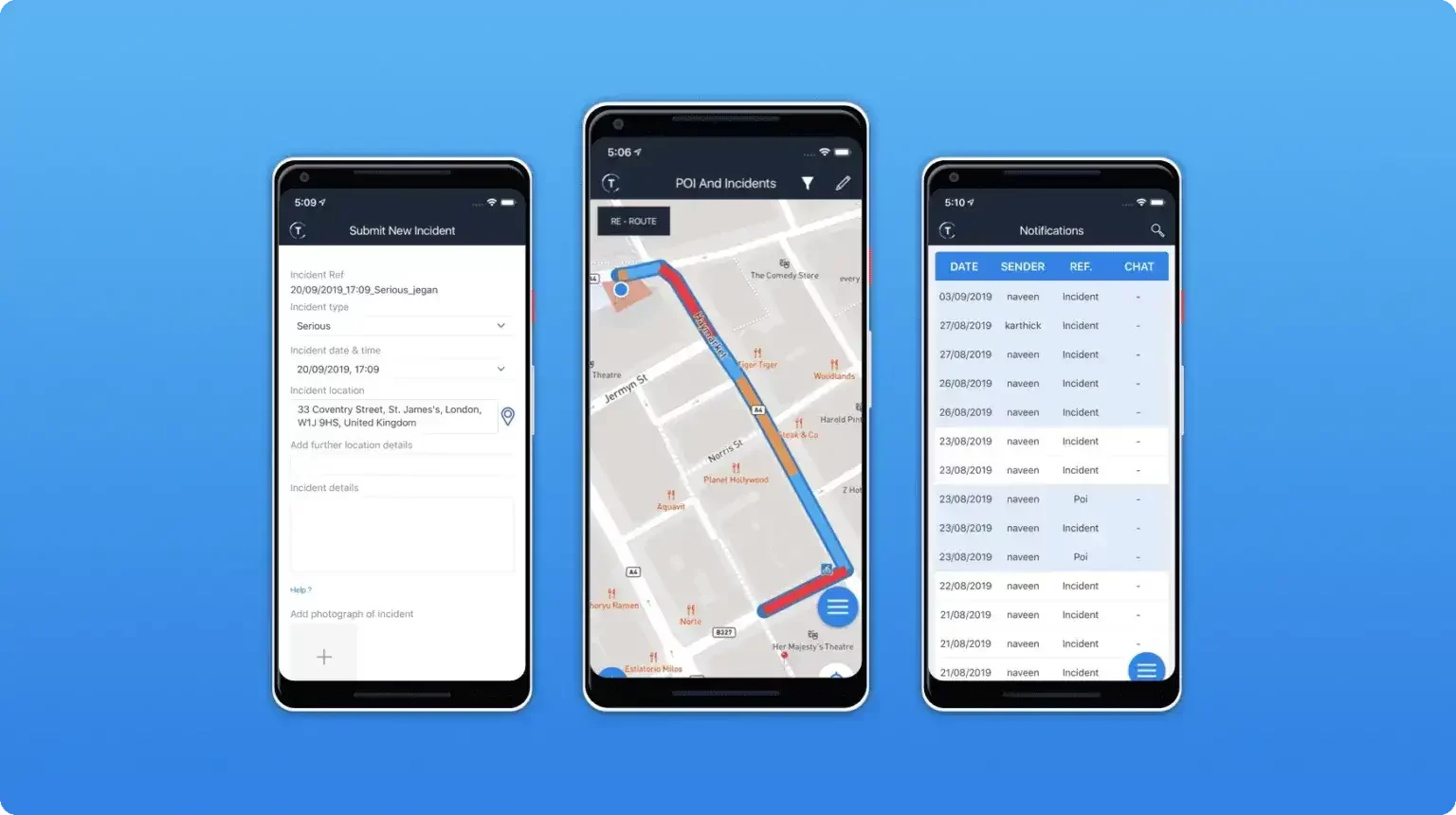
Trygg
Our application ensures the safety of field staff in any environment through real-time connections to security managers. Incidents, including accidents and natural hazards, are instantly captured and reported, enabling teams to swiftly locate staff using GPS coordinates, visualized through Mapbox services. The application provides seamless monitoring and rapid response capabilities, facilitating global protection of the team while streamlining operations.
Red Taxi
The Red Taxi app is a cutting-edge cab management solution that simplifies ride bookings and streamlines fleet operations. With real-time cab tracking, customers can effortlessly follow their assigned cab until it arrives, while drivers efficiently manage ride requests and navigate pick-up locations. This innovative platform enhances the overall ride experience, ensuring smooth and reliable journeys for everyone involved.
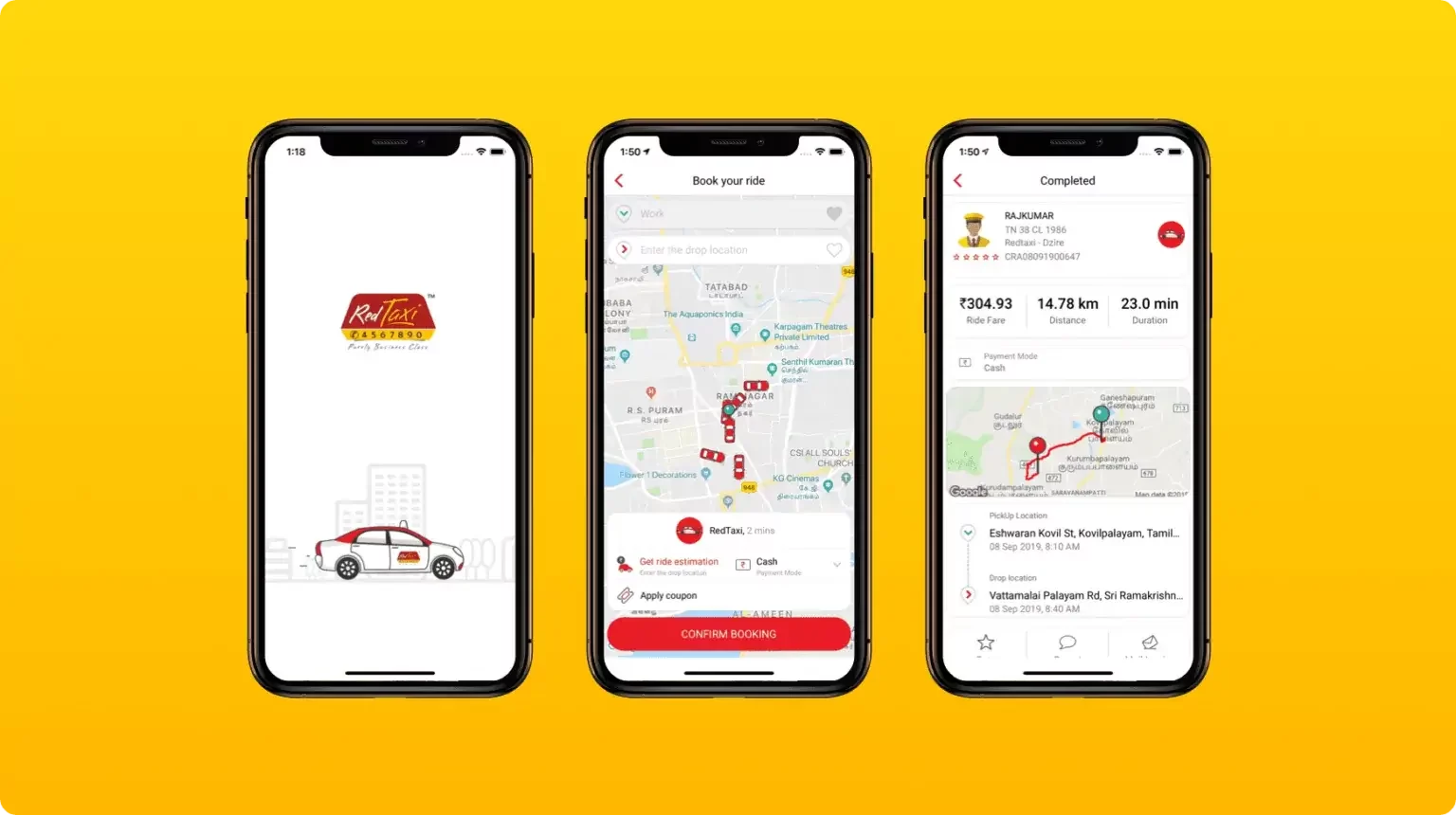
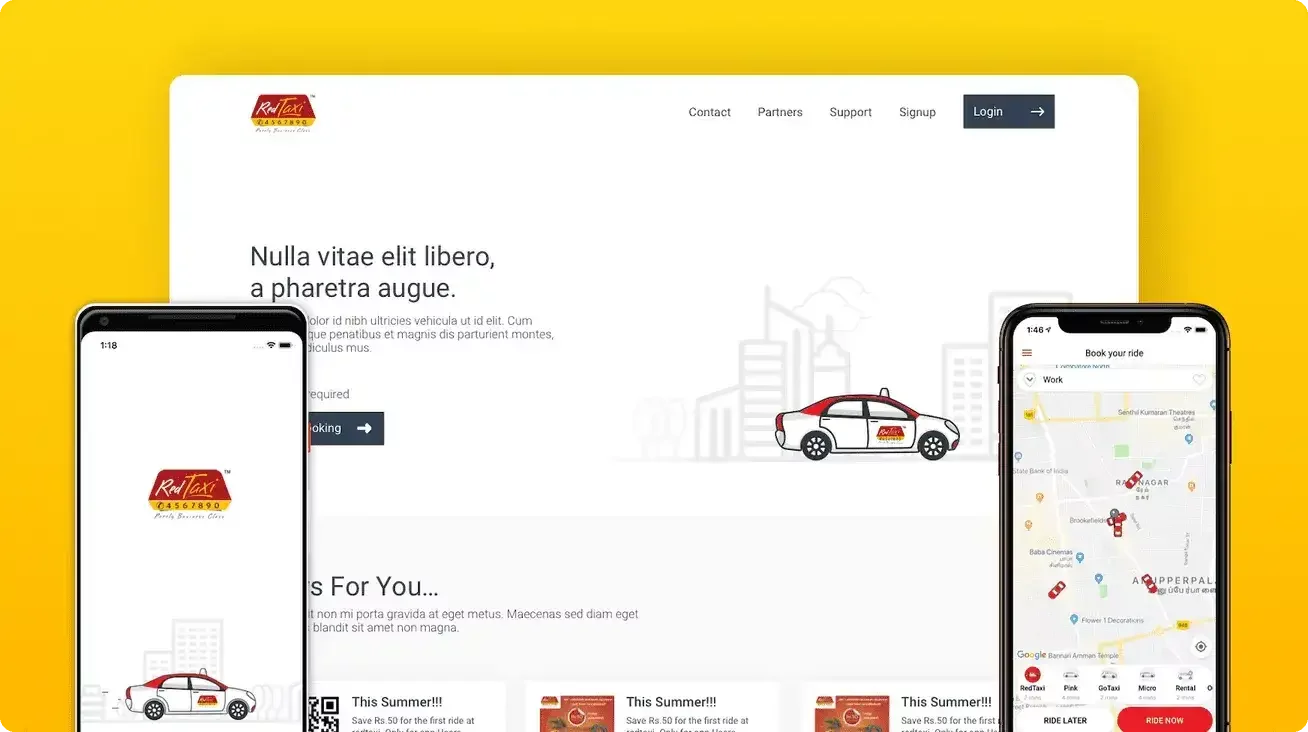
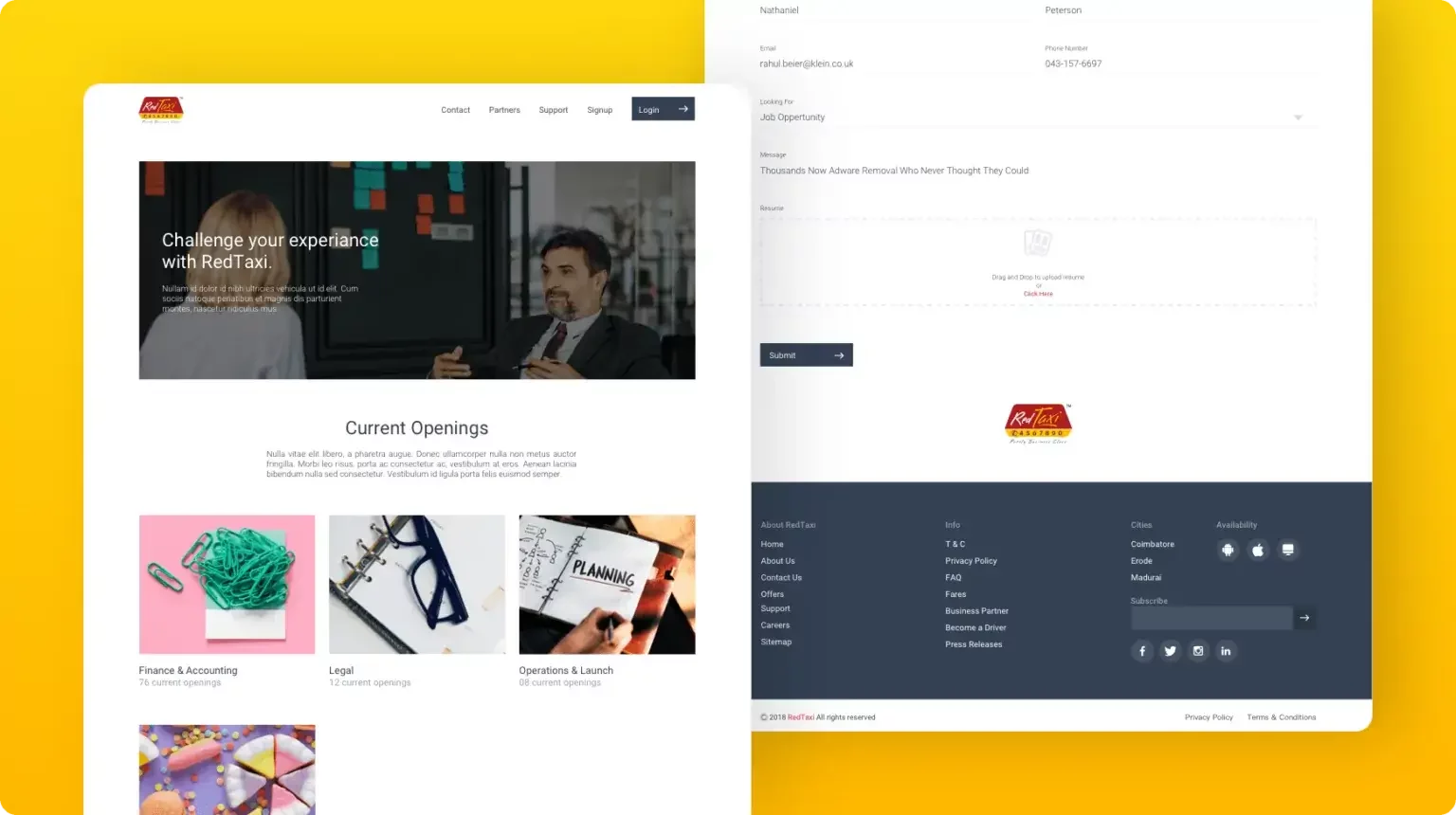
How much does mobile application development cost when outsourcing?
Mobile application development cost can vary a lot depending on location, skill level, and project complexity. Explore different options where affordable solutions meet great quality, helping you find the right balance for your project. Knowing how investment levels range from simple MVPs to more advanced applications will guide your decision-making process.
For an MVP (Minimum Viable Product), the focus is on creating a basic version of the app with essential features, making it a budget-friendly option. As you move to a medium-sized application, you’ll find more advanced features, integrations, and customizations, which will cost more than an MVP. On the other hand, complex mobile app projects have sophisticated elements like real-time data processing, AI integration, and compatibility with multiple platforms, leading to higher development time and costs. Understanding these differences can help you choose the best option for your business needs.
| Country | Minimum Viable Product (MVP) | Medium - sized application | Enterprise - level applicationation | Average hourly rates |
|---|---|---|---|---|
| India | $5000 – $20000 | $25000 - $60000 | Starts from $65000 | $15 - $50 |
| USA | $10,000 – $50,000 | $50,000 -$150,000 | Starts from $150,000 | $100 to $250 |
| UK | $12,000 - $40,000 | $40,000 - $100,000 | Starts from $100,000 | $60 to $180 |
| Australia | $20,000 - $80,000 | $80,000 - $200,000 | Starts from $200,000 | $100 – $150 |
| China | $8,000 to $30,000 | $30,000 to $60,000 | Starts from $65,000 | $20 to $50 |
Are your deciding between developing a native or hybrid mobile application?
The choice between both the applications can significantly impact your project’s success, influencing both costs and timelines. Comparing the two in terms of performance, user experience, budget, timeline, and UI design will help you make an informed decision. Selecting the right development approach ensures your app aligns with your goals and sets a strong foundation for future updates.
Here’s a breakdown to help you decide the best fit for your business.
| Criteria | Native application development | Hybrid application development |
| Performance | ✔ High performance and speed | ✖ Might not excel in terms of screen navigation, rendering etc as compared to Native applications |
| User experience | ✔ Native user experience | ✖ Animations and the feel of intuitiveness will not be as high-performing compared to Native. |
| Maintainability of the development team expertise | ✖ Requires platform-specific expertise. Due to its existence this is not a problem. | ✔ You won’t need to manage different teams from different expertise. |
| Budget and timeline | ✖ Higher initial cost and longer development time | ✔ Cost-effective and faster development |
| Cross-platform compatibility | ✖ Separate codebase for each platform (iOS and Android) | ✔ Single codebase for multiple platforms (iOS and Android) |
| Access to native features | ✔ Platform itself provides access to reach out the components like camera, photos etc. | ✖ Limited access, may require plugins |
| Suitability for complex applications | ✔ Ideal for complex, feature-rich apps | ✖ You can build complex applications using Hybrid as well but you might face some challenges because there could be higher dependency on open-source packages. |
| Maintenance and updates | ✖ May require more effort for maintaining two codebases | ✔ Easier updates with a single codebase |
| Code reusability | ✖ Code is platform-specific | ✔ Code can be reused across platforms |
| User interface design | ✔ Intuitive look and feel on each platform | ✖ May require platform-specific design adjustments. |
| Community support | ✔ Both platforms owns a great community support. | ✔ Both platforms owns a great community support. |
| Debugging and troubleshooting | ✔ Comprehensive and platform-specific debugging tools | ✖ Comparatively more complex than Native applications |
| Security concerns | ✔ Stronger security measures | ✔ Though you have secured features here but sometimes you might have to be highly dependent on open source packages |
| Platform-specific issues development bugs and issues | ✔ Chances of bugs and issues could be slightly higher since there happens to be two codebases | ✖ Since the this is going to be handled in a single codebase, chances of bugs could comparatively be lesser |
| Prototyping and MVPs | ✖ May not be the quickest option for rapid prototyping | ✔ Suitable for quick prototyping |
Deciding between choosing between native and hybrid mobile app development?
Explore our detailed comparison of Native vs. Hybrid mobile application development to make an informed choice. This comprehensive analysis covers the strengths and weaknesses of each approach, helping you determine the best fit for your project’s needs and goals.
How much does it cost to develop an application with Mallow?
The cost of software development can vary significantly depending on the specific features and complexity of the project. The price for software development outsourcing typically ranges from $20,000 to $40,000 for web applications if it is a basic MVP, while mobile apps generally cost from $10,000 to $25,000. As the complexity of the software increases, so do the costs. Developing a medium-sized web app with a moderate range of complexities can cost from $60,000 to $150,000. For mobile apps, the price usually ranges from $30,000 to $50,000.
In contrast, developing an enterprise-level application, which includes advanced features, complex functionalities, and integrations, starts at $200,000 for web apps and from $65,000 for mobile apps. These costs reflect the enhanced features, integrations, and scalability needed for larger projects, ensuring customized solutions that meet your business needs.
Basic MVP
The simplest version of a product includes only the essential features needed to satisfy initial users and gather valuable feedback.
Web App
$20,000 - $40,000
$20,000 - $40,000
Mobile App
$10,000 - $25,000
$10,000 - $25,000
Medium-Sized Application
A product having a moderate level of features, functionality, and complexity aiming for a moderate user base, such as several thousand users.
Web App
$60,000 - $150,000
$60,000 - $150,000
Mobile App
$30,000 - $50,000
$30,000 - $50,000
Enterprise-Level Application
A comprehensive product designed to meet the complex needs of large organizations or enterprises to serve a large user base, potentially ranging from tens of thousands to millions of users.
Web App
Starts from $200,000
Starts from $200,000
Mobile App
Starts from $65,000
Starts from $65,000
| Basic MVP | Medium-Sized Application | Enterprise-Level Application |
|---|---|---|
| The simplest version of a product includes only the essential features needed to satisfy initial users and gather valuable feedback. | A product having a moderate level of features, functionality, and complexity aiming for a moderate user base, such as several thousand users. | A comprehensive product designed to meet the complex needs of large organizations or enterprises to serve a large user base, potentially ranging from tens of thousands to millions of users. |
|
Web App
$20,000 - $40,000 |
Web App
$60,000 - $150,000 |
Web App
Starts from $200,000 |
|
Mobile App
$10,000 - $25,000 |
Mobile App
$30,000 - $50,000 |
Mobile App
Starts from $65,000 |
Please note that these cost estimates are approximate and can vary widely based on factors like the complexity of features, the size of the development team, geographical location, developer skill levels, project duration, and any additional services required (e.g., design, QA, ongoing maintenance).
Our technology stack as a mobile app development company
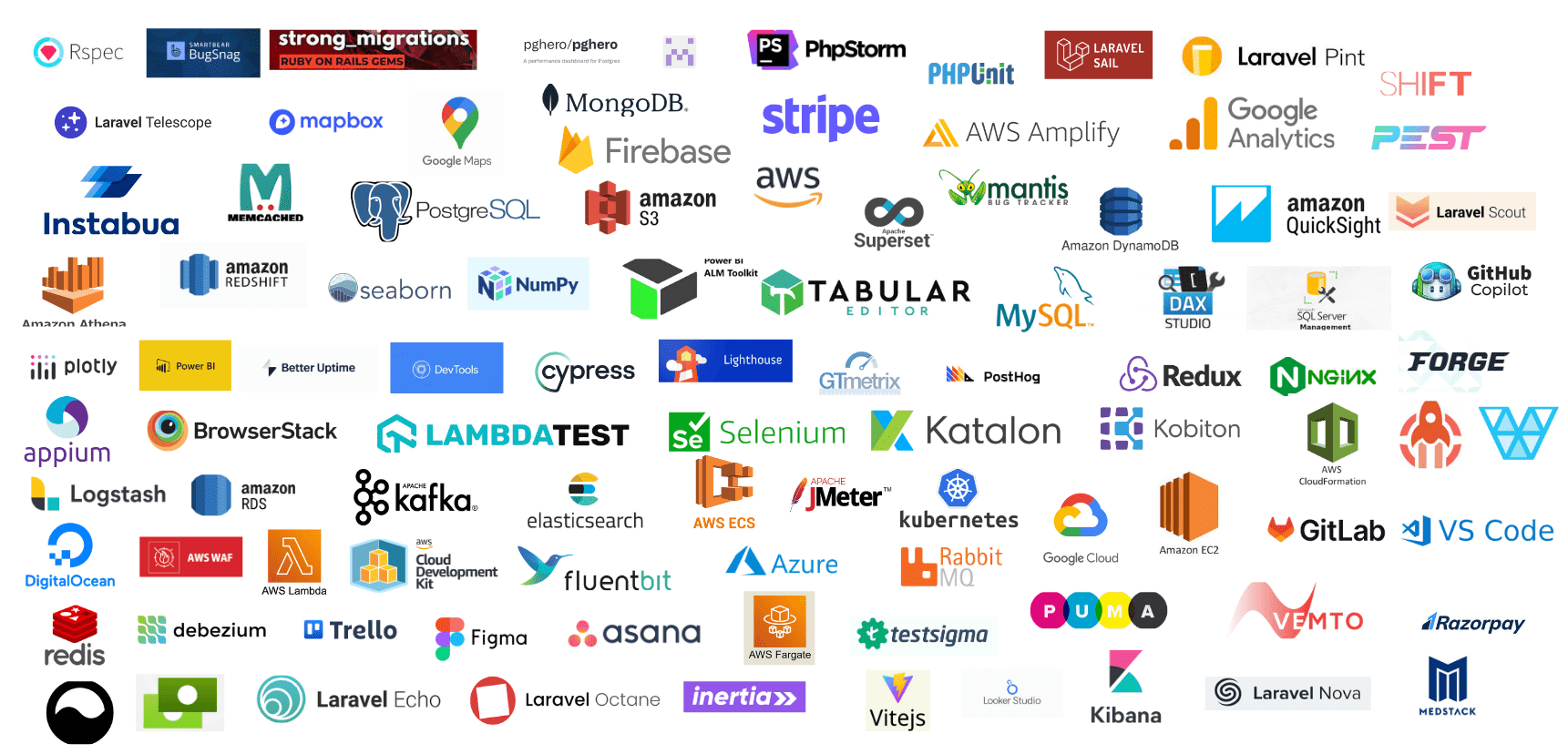
and much more….
Your queries, our answers
What is mobile application development?
Mobile application development involves creating software applications designed to run on mobile devices like smartphones and tablets. These apps can be native (built specifically for iOS or Android), cross-platform (designed to work on multiple platforms), or hybrid (combining elements of both).
What are the stages of mobile app development at Mallow?
Our mobile app development process includes the following stages: requirement gathering and analysis, design and prototyping, development and coding, testing and quality assurance, deployment, and post-launch support. Each stage is crucial to delivering a high-quality application.
To gain deeper insights into the experience of working on a mobile project with Mallow, explore more details here.
Should I develop a native or cross-platform app?
The choice between native and cross-platform development depends on your project’s goals, budget, and target audience. Native apps offer better performance and a more tailored user experience, while cross-platform apps allow for faster development and lower costs by using a single codebase for multiple platforms. For a detailed comparison of Native vs. Hybrid development, explore our comprehensive analysis to help you make an informed choice.
What platforms does Mallow develop mobile apps for?
Mallow develops mobile apps for iOS, Android, and cross-platform solutions. We use the latest technologies and frameworks to ensure your app performs optimally on the platforms that matter most to your users.
How do I choose the right features for my mobile app?
Choosing the right features for your mobile app depends on understanding your target audience, business goals, and budget. We work closely with you to prioritize features that will provide the most value to your users and align with your business objectives.
How does Mallow handle app updates and maintenance?
At Mallow, we offer ongoing app maintenance and updates as part of our post-launch services. This includes regular updates to improve performance, add new features, and ensure compatibility with the latest operating systems. For more details, get in touch with our team.
Can Mallow help with app store submissions?
Yes, Mallow assists with the entire app store submission process, including meeting the guidelines for Apple’s App Store and Google Play. We ensure your app is ready for submission and provide support to help it get approved.
What technologies does Mallow use for mobile app development?
Mallow uses a variety of technologies and frameworks for mobile app development, including Swift and Objective-C for iOS, Kotlin and Java for Android, and React Native and Flutter for cross-platform development. Our technology choices are driven by the specific needs of your project.
How much does it cost to develop a mobile app?
The cost of developing a mobile app depends on several factors, including the app’s complexity, features, platform (iOS, Android, or both), and the development team’s expertise. Costs can range from $10,000 to $150,000 or more. To know more, check out how much it costs to work on a mobile project with us.
How long does it take to develop a mobile app?
The development timeline for a mobile app varies depending on the complexity of the project. A basic app may take 2-4 months to develop, while a more complex app with advanced features can take 6-12 months or longer.
How do I choose the right features for my mobile app?
Choosing the right features for your mobile app depends on understanding your target audience, business goals, and budget. We work closely with you to prioritize features that will provide the most value to your users and align with your business objectives.
How do you test mobile apps before launch?
Our testing process includes functional testing, performance testing, security testing, usability testing, and compatibility testing across different devices and operating systems. We ensure your app is bug-free and performs optimally before it goes live.
Will Mallow provide post-launch support for my mobile app?
Yes, Mallow offers comprehensive post-launch support, including monitoring, updates, bug fixes, and enhancements. We ensure your app remains up-to-date and continues to perform well after it’s launched.
What are the benefits of having a mobile app for my business?
A mobile app can enhance customer engagement, increase brand visibility, provide better service through personalized experiences, and create new revenue streams. It also allows you to reach a broader audience by making your services more accessible on mobile devices.
How do I get started with mobile app development at Mallow?
Getting started with Mallow is easy! Simply reach out to us to discuss your project. We’ll work with you to understand your goals, define your requirements, and create a development plan that meets your needs. Let’s bring your mobile app idea to life!.
How do you ensure the security of the mobile apps you develop?
Security is a top priority at Mallow. We implement advanced security measures, including encryption, secure authentication, and regular security audits, to protect your app from potential threats and ensure data integrity.
To learn more about how we handle and implement these security measures, check out more details here.
What happens after you fill-up the form?
Request a consultation
By completely filling out the form, you'll be able to book a meeting at a time that suits you. After booking the meeting, you'll receive two emails - a booking confirmation email and an email from the member of our team you'll be meeting that will help you prepare for the call.
Speak with our experts
During the consultation, we will listen to your questions and challenges, and provide personalised guidance and actionable recommendations to address your specific needs.



